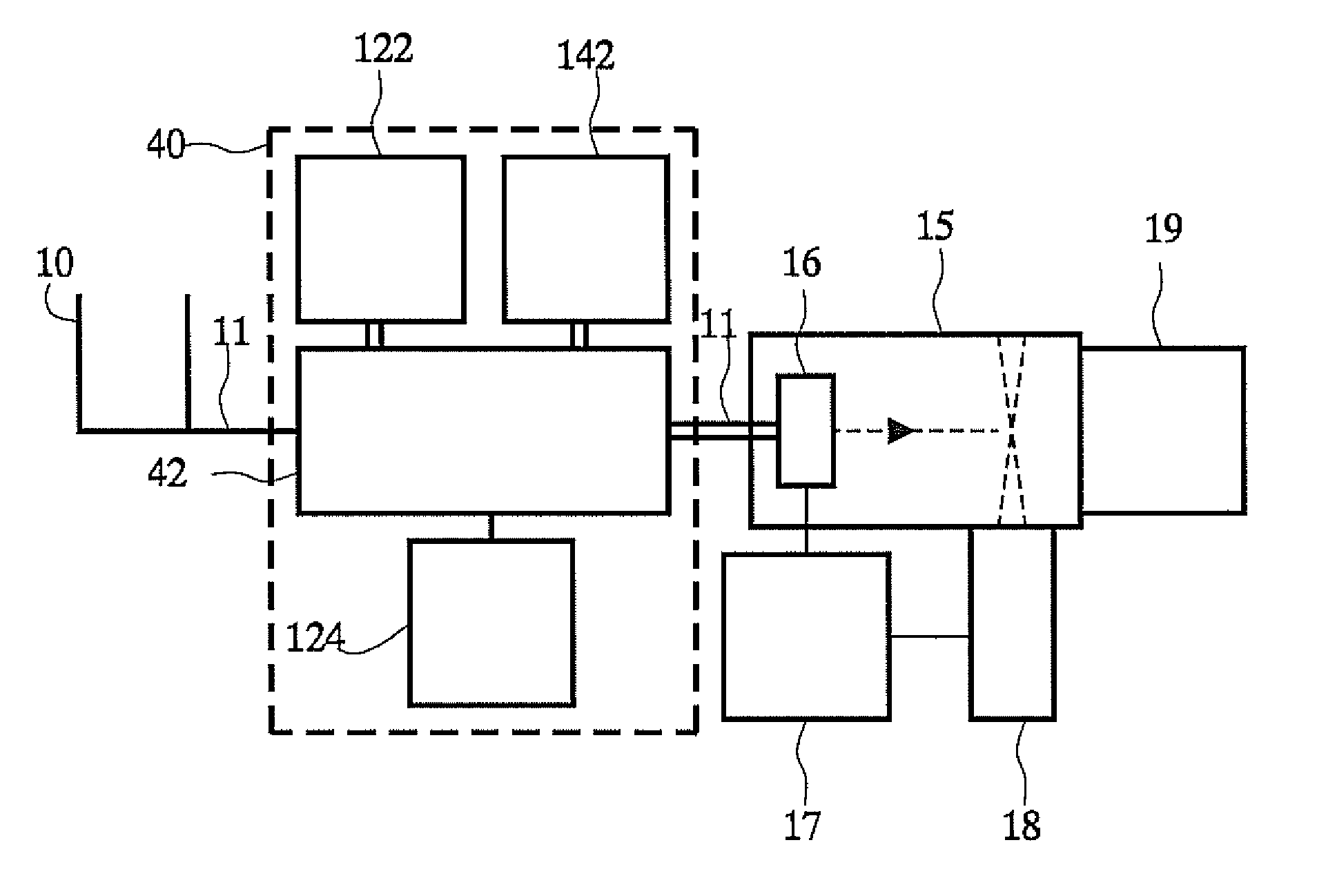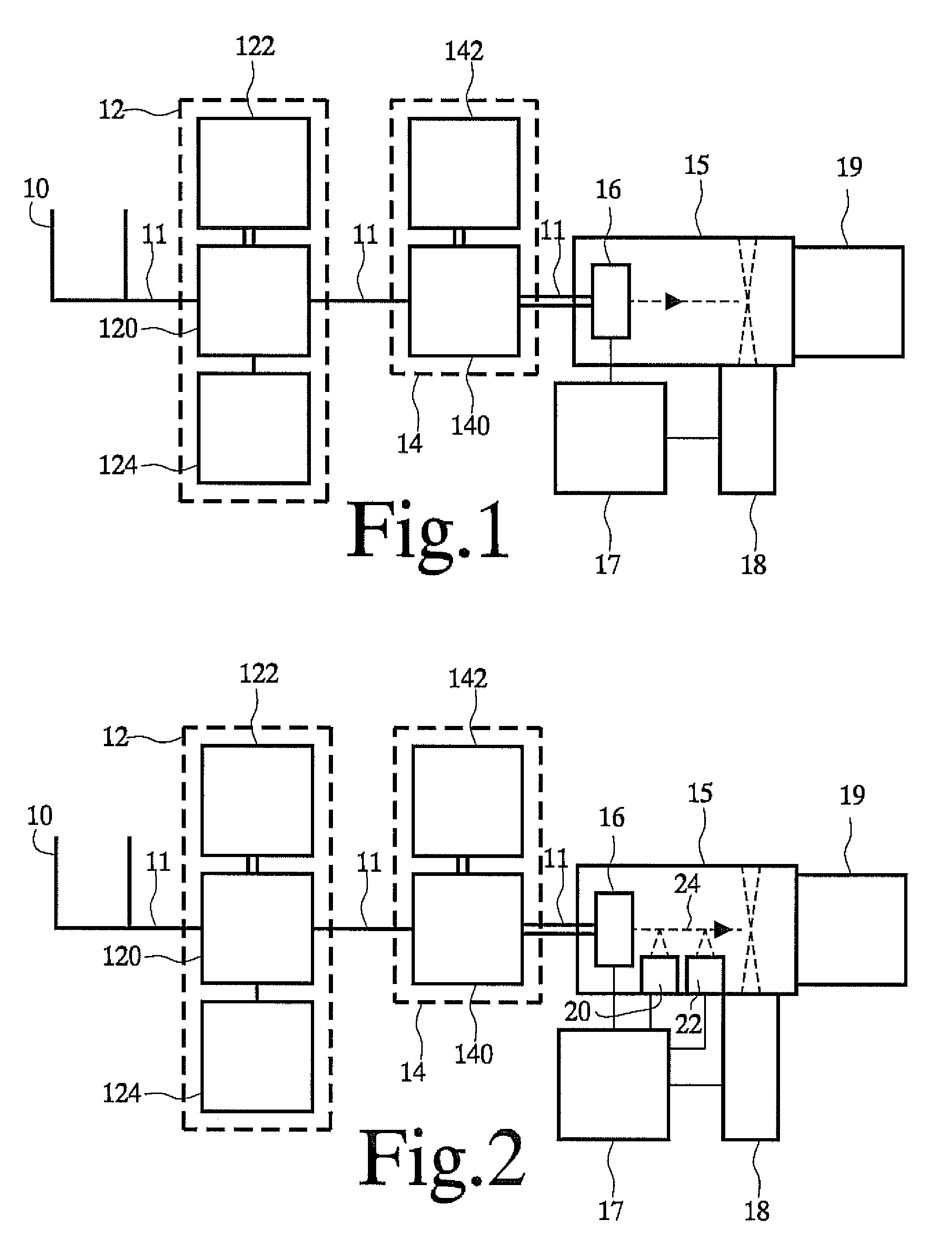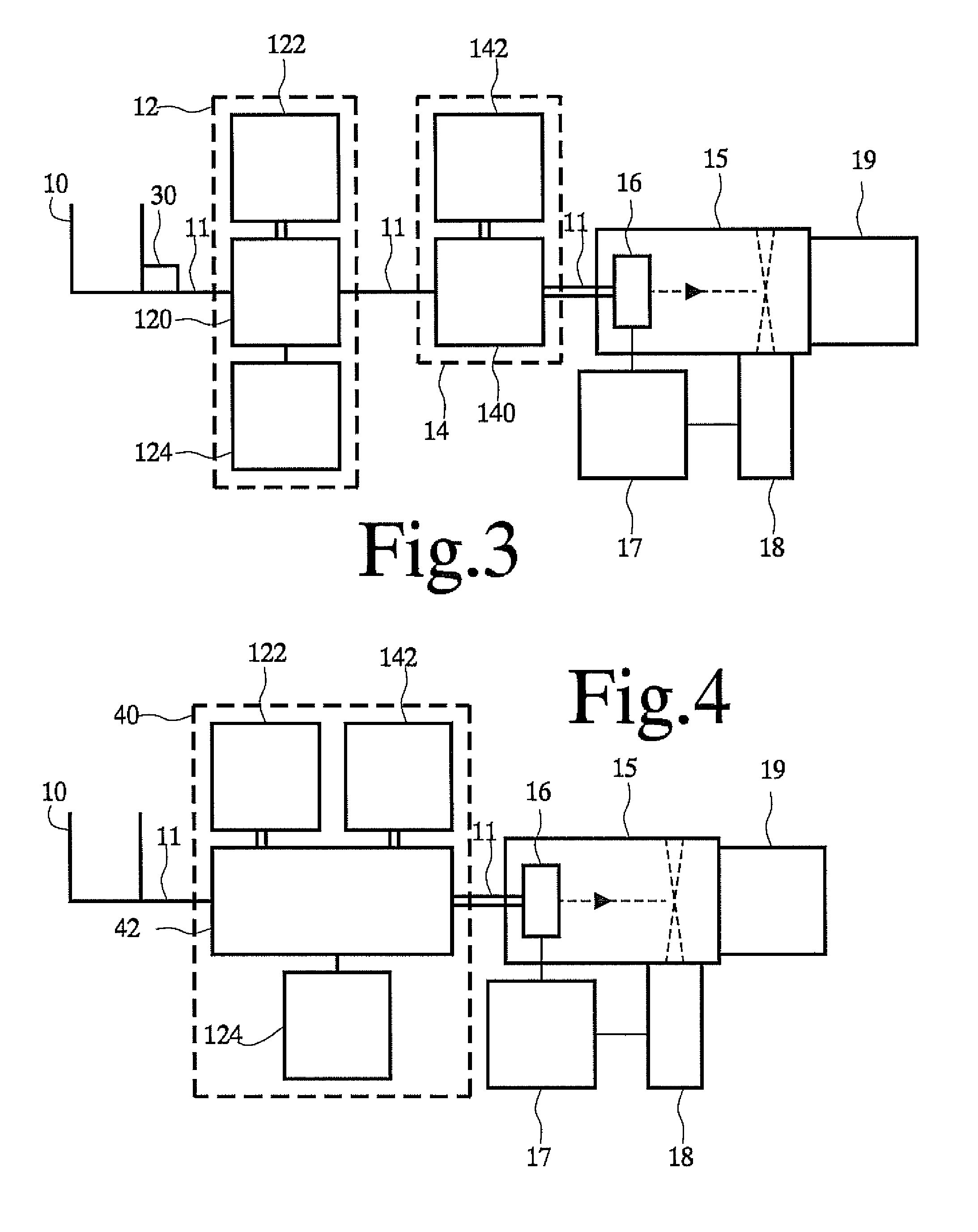Method and apparatus for identification of biological material
a biological material and identification method technology, applied in the field of biological material identification, can solve the problems of not being able to detect, affecting the identification of individual species, so as to reduce the probability of drops
- Summary
- Abstract
- Description
- Claims
- Application Information
AI Technical Summary
Benefits of technology
Problems solved by technology
Method used
Image
Examples
Embodiment Construction
[0040]FIG. 1 schematically shows an apparatus for identifying biological material. Although an application to identification of micro-organisms will be described in the context of this apparatus, it should be appreciated that the apparatus is only one embodiment of an apparatus that performs MALDI mass spectroscopy on flying droplets. It should be understood that other biological material may be used instead of micro-organisms, such as cells (e.g. blood cells, peptides etc.).
[0041]The apparatus comprises a sample receiver 10, conduits 11, a first mixing unit 12, a second mixing unit 14, a chamber 15, a piezo resonator 16, a control circuit 17, a pulse laser 18 and a mass spectrometer 19. Piezo resonator 16 may be of a type used in inkjet printers to form drops of ink. Conduits 11 connect sample receiver 10, first mixing unit 12, second mixing unit 14 and piezo resonator 16 in series. Control circuit 17 is coupled to piezo resonator 16 and pulse laser 18.
[0042]Piezo resonator 16 is l...
PUM
 Login to View More
Login to View More Abstract
Description
Claims
Application Information
 Login to View More
Login to View More - R&D
- Intellectual Property
- Life Sciences
- Materials
- Tech Scout
- Unparalleled Data Quality
- Higher Quality Content
- 60% Fewer Hallucinations
Browse by: Latest US Patents, China's latest patents, Technical Efficacy Thesaurus, Application Domain, Technology Topic, Popular Technical Reports.
© 2025 PatSnap. All rights reserved.Legal|Privacy policy|Modern Slavery Act Transparency Statement|Sitemap|About US| Contact US: help@patsnap.com



